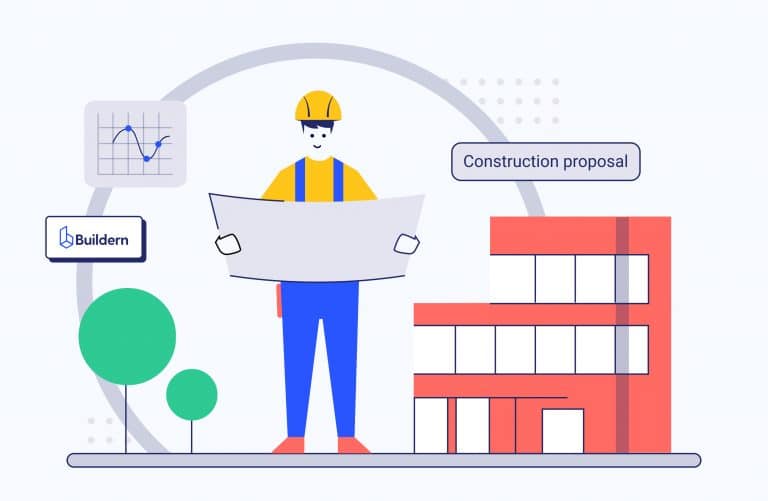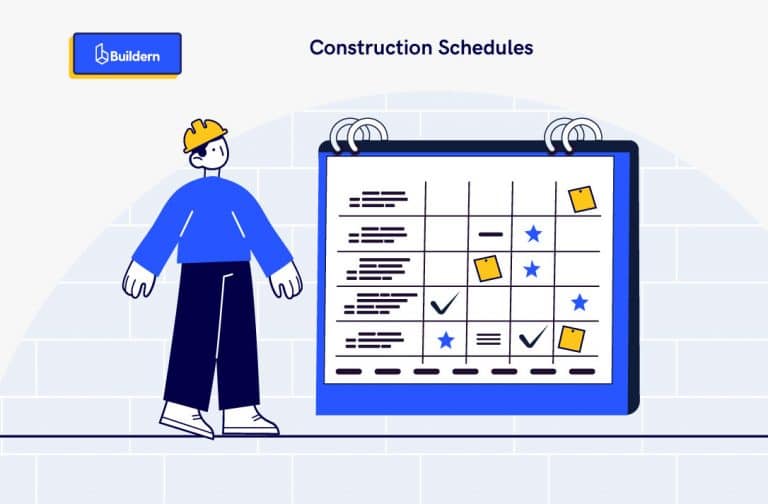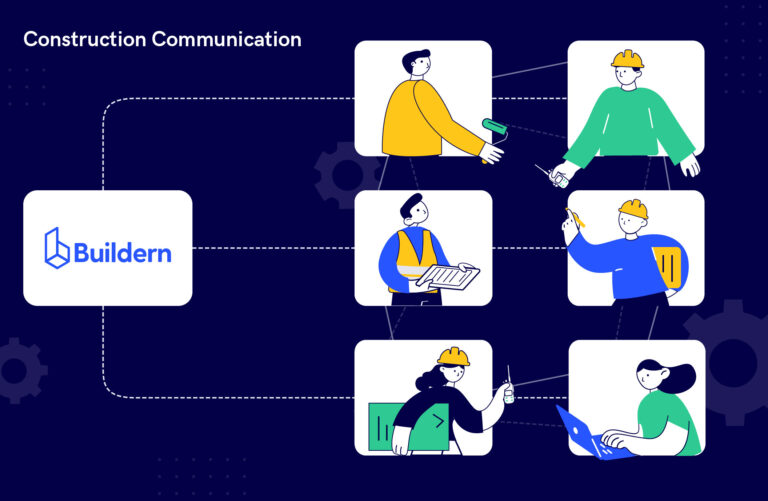Construction Rework Costs, Statistics & Eliminations

Imagine you’re working on a critical project for hours when all of a sudden your computer shuts down, and you lose all of your results. We’ve all been there at least once and know exactly how it feels. Now imagine that the work you were doing required an entire team, took you all a couple of months of huge effort, and now you have to do it all again.
Yes, we’re talking about construction rework. Starting a construction company is a pretty challenging endeavor, and not everyone succeeds in this tough industry. Sometimes because of poor organization skills, lack of experience, and a range of other factors, construction projects fail from the first attempt and require some rework.
But what exactly is construction rework, and how common it is in the industry?
Let’s start with the simple definition:
Construction rework is an activity that should be repeated or completed again after the work has been finished because some part/parts of the project were not done properly during the execution phase and should be corrected after it.
In other words, the construction rework refers to the unnecessary process of redoing an activity that was simply not performed well enough at first.
Although it sounds exhausting, in fact, rework in the construction industry is not rare at all. The truth is that around 30% of the overall construction work is actually a rework. There are two types of reasons for the rework: the external ones, which usually refer to the causes that cannot be controlled (like a natural disaster, the sudden lack of materials in the industry, and so on), and the internal ones which are the fault of the company.
Let’s skim through some of the most common causes of rework in construction:
- Some missing documents or details
Not having the necessary documents and pieces of information when your construction team needs it.
- Inexperienced workers
When your workers have not undergone the required training to complete their tasks properly, the overall project quality will be sacrificed.
- Inadequate procurement
This is when your team fails to buy the required supplies on time or makes mistakes during the procurement stage, buying the wrong materials.
- Bad supervision
The failure of the management team to oversight the employees and ensure quality administration of the project.
- Schedule issues
Sometimes the deadlines of the project might be way too tight, and as a result, the team might fail to maintain the quality standards
- Communication issues and no collaboration
If there are communication problems between your teams, it will inevitably lead to misunderstandings. Which on its turn, might result in a lack of collaboration and teamwork, hurting the overall project.
Although there are many causes of rework in construction, construction companies can try to avoid them by conducting proper quality control checks and correct rework estimations.
Quality control checks are done to ensure that the project meets all the requirements and standards of the client. It helps to assure the on-time completion of the project by resolving or avoiding any disputes that might occur in the process.

The quality control checks not only reduce the probability and cost of rework in construction but also help to:
- Improve your client’s satisfaction
- Improve your company’s reputation by offering quality projects
- Win more bids in the future
So try to create a quality control checklist where you would clearly define all the most common problems that might occur during the project. But don’t make it too extensive; try to keep it concise. The shorter your list is, the better you can focus on the critical factors when checking.
After creating your checklist, keep reviewing it and remove the items that always pass the control processes. Instead of them, you can include the recurring issues that you haven’t thought of in the beginning.
In the quality checklist, you should also be very specific. Remember that you are going to share it with your crew, so they too should be able to understand exactly what each item means.
Overall, the quality control checklist helps you to verify that all the tasks in the project are being completed in a timely manner. It will help your company periodically track the project’s state and quality.
Overall, quality checkups are one of the main processes that help construction companies stay organized and avoid rework, but there is much more that companies should do to be fully prepared.
Understanding the construction rework indicators, the potential cost of rework, and the common practices that will help eliminate it is crucial for any construction project.
And we’ll go through all of these processes one by one. Let’s start with the:
Construction Rework Indicators
When you’re in the middle of your construction project, it’s hard to understand whether the work you’re currently doing will need to be redone later or not. But if you succeed in identifying the construction rework indicators early on, the chances are high that you will avoid most unnecessary rework. Of course, it is hard to bypass all the construction field rework, but at least you can make it more manageable.
For that, let’s understand what you should be attentive to during your project by looking at the common indicators of rework.
The experts differentiate three main types of rework indicators: project-based, organization-based, and human-based.
Project-based indicators refer to the issues regarding the design, the scope definition of the project, or the problems between the owner of the project and the client.
As the name suggests, the organization-based rework indicators are connected to the management and organization of the project. Inefficient coordination or miscommunication are some of the most common samples of organization-based rework indicators.
The last one is the human-based rework indicators, which deal with the employees’ lack of experience, training, knowledge, and skills. It also includes the cases where the clients change their minds on certain aspects of the project, although they were initially planned on with the construction company and covered in the contract. In these cases, usually, the best solution is to show the client’s documentation and visual proof that the project met all the initial requirements. If they do insist on changes, all the rework should be covered by their own finances.
So if you notice some of these indicators during the project, you need to work hard to solve all the issues as the chances are high that you’ll end up with construction field rework in the end.
For instance, if you notice that your employees struggle with completing their tasks and always miss deadlines, you should instantly identify it as a human-based rework indicator and send your less-experienced workers for quick training to level up their skills.
Let’s take a look at academic research represented at the 7th CSCE International Construction Specialty Conference, which singles out the most common examples of rework indicators so that you know what to keep your eyes on during the project.
The research analyzed more than 100 peer-reviewed articles, dissertations, reports, and conference papers, all of which focused on the organizational, project, and human-based rework indicators. In the end, the experts identified 57 of those articles which, in their assessment, were the most relevant. By collecting data from these key articles and analyzing them, the researchers have differentiated the most widespread rework indicators of each type:

Project-based rework indicators
The most common examples are:
- inappropriate or poor design
- unclear scope definition
- issues of the site location
- issues regarding the materials
- supervision issues
- financial problems
- unclear specifications regarding the tasks
- quality problems
As you can see, the poor design and unclear definition of the scope of the project are among the most common project-based rework indicators. So first of all, make sure your design has no leaks in it, is 100% feasible and approved by your client.
And, of course, secure a high level of communication between your company and your clients throughout the project. In the early stages of it, you should be sure that both of you are on the same page. Your clients should clearly understand the project’s scope and know exactly what to expect from you.
Organization-based rework indicators
The most common examples are:
- poor coordination
- resource management issues
- miscommunication
- lack of training
- poor design control and audit
- bad documentation control
- overall bad quality of management
Poor coordination leads to the project’s deviation from the main requirements, which is why it has ranked at the top of organization-based rework indicators. On the other hand, if the project coordination is done properly, it will help minimize the cost of rework in construction.
The second most common indicator is the lack of resource management, so this is also something you need to look out for.
Human-based rework indicators
The most common examples are:
- not enough experience
- lack of skill
- lack of employees’ knowledge
- poor safety commitment
- low motivation
Again, as mentioned earlier, the lack of experience is one of the most popular human-based rework indicators. Just think of it: if your designers do not have enough work experience in the industry, the risk that they will make more errors, which eventually will lead to construction rework, is higher.
Among the five most widespread rework indicators in this category is also the lack of safety commitment. The construction rework statistics of this research have shown that when the employees do not have a strong safety commitment, they will more likely engage in high-risk behaviors and not follow the initial plan. As a result, they’ll end up having more injuries, which will force the construction team to postpone the work and make it challenging to meet the deadlines.

Cost of Rework in Construction
Other than being aware of indicators, you should also know approximately how much the rework will cost your company so that you are ready to confront it, if necessary.
Overall, rework in construction projects often costs around 5% of the total project cost. The worst part is that the overruns compose approximately 7.1% of overall work hours.
But what exactly are cost overruns in construction? We all know it when we’ve passed our own planned budget during the vacation. But when it comes to construction projects, the situations that lead to cost overruns might be hard to notice initially.
Overall, the cost overrun, which can also be referred to as budget overrun or cost increase, is when the construction company confronts unexpected expenses which cause the overall project to exceed the initial budget that the company has agreed on with its client.
To be more prepared for the cost overruns, construction companies usually get rework insurance, which covers the extra fees of, for instance, removing contractor’s work when an error was found or replacing the damaged work with a better one.
Most of the insurance companies in the industry will add the rework coverage to the General Liability Policy (CGL).
The causes of cost overrun are different. Most of the time, they are connected with the underestimation of the actual cost of the overall project during the planning and budgeting phase.
For instance, the price of the materials can be increased during the execution phase, so the company will be forced to go over the planned budget. Be that material costs or shortages of labor, the factors of cost overruns can have a huge impact on the budget, timeline, and overall progress of the project.
According to The International Journal of Innovation, Management and Technology, there are mainly seven common causes of cost overrun:
- Design changes that occur during the construction phase
- The financing of contractors
- Delay in payments
- Contractors’ lack of experience
- Poor estimation of costs
- Bad tendering documents
- Poor management of materials
As you can see, issues connected to design are among the most common reasons for cost overruns in construction. According to the Structure and Infrastructure Engineering Journal, 52% of projects’ overruns are due to design errors and changes.
But so far we have only mentioned the financial aspects of overruns. The hardest part is that rework in the construction industry also has a significant psychological impact on all the participants of the project, mainly the general contractors and subcontractors.
The concept of redoing a particular task can cause a lot of inter-organizational conflicts. According to studies, rework can cause a project delay of around 9.8% of the planned project time. Logically, most of the workers will get demotivated during this phase, which will negatively impact the quality of the project. In the end, the construction rework results in customer dissatisfaction, which is something all construction companies want to avoid.
One of the famous examples of big overruns in the construction industry was back in 1973 when Canada started working on “The Big O” stadium, which was designed for the 1976 Olympics. The initial budget was around $148.6 million, but the final budget reached $3.1 billion.
That is approximately 2,000 percent of budget overrun! Because of this, the project earned “The Big Owe” nickname. The worst part is that the stadium wasn’t even completed when the Olympics started. They waited until the games were finished to install the retractable roof.
Clearly, no one wants their project to be nicknamed “The Big Owe,” so here is:
How to Eliminate Construction Rework
Throughout the history of construction, people have tried to eliminate the construction rework and developed specific strategies and models.
One of the most popular methods used in the construction industry to avoid budget and schedule overruns is the LPS, which stands for the Last Planner System. It is a workflow method that was developed by the Lean Construction Institute aimed to increase employee productivity and sense of responsibility by using really tight scheduling and very detailed group planning.

The core principle of this method is to assure that every single contractor and subcontractor of the project can handle the assigned workload and is personally responsible for completing the allocated work.
In other words, LPS regards every worker as a stakeholder of the overall project and makes them accountable for their workflow.
The LPS goes through these five main stages:
- Creating the master schedule
- Creating phase schedule
- Holding “make work ready planning” meetings (these are designed for tasks that need to be completed from four to six days from the meeting time. )
- Organizing weekly check-ins
- Organizing daily “learning meetings” for the last planners (before the workers leave the construction site, they need to confirm that they have completed the tasks assigned to them)
LPS is very efficient for most construction companies, and you can try this strategy for your company too. However, no matter which model you choose to follow for decreasing the construction rework, we have collected some tips that will help you along the way:
Pre-select Quality Criteria
You might be upset to hear this, but the “laissez-faire” approach is not really working in the construction industry. So you can’t stand aside from the project and let it flow in its own rhythm.
Instead, you need to set clear quality standards and track them throughout the project, ensuring that all those standards are followed. Try to adopt certain workflows, equipment, and tools that will help you oversee your project’s quality assurance (QA) and quality control (QC).
Improve Communication
Back in 2018, almost half of all the rework in construction projects was due to poor communication between the project stakeholders. In US construction sites, 48% of all the rework done was caused by miscommunication. And 26% of it was attributed to the poor communication among the team members.
We have already mentioned that poor communication was among the industry’s most frequently occurring organization-based rework indicators, so you need to ensure that you maintain excellent communication throughout the project. In our previous article, we have mentioned how continuously improving communication is one of the most efficient project management strategies.
It is the core of any construction project, so don’t underestimate its impact and importance.
Implement Digital Solutions
Another bad news: if you’re nostalgic about the “old way” of doing things, where all you needed for scheduling was a pen and paper, we’re sorry to tell you this, but your construction project is doomed to failure.
Today, engaging in time-consuming paperwork is simply inefficient for your entire project, and the chances that you’ll end up making some errors are higher. Moreover, you will have a hard time including the real-time updates in your plan, making it difficult to see the progress of the work.
Instead, the best solution for scheduling and managing your project is to use construction project management software that will help you avoid construction rework.
With construction software like Buildern, you’ll have a variety of tools in hand. Here are a couple of helpful features:
- When creating a cost catalog for more than one time in the software, you can easily upload the already created files to your system.
- The software allows you to label your subs/vendors once and then search for them and other trade partners later on.
- There is no need to create item versions multiple times. Simply edit the already created ones and resend.
- You don’t have to remember and manually remind your clients or trades about the pending items. Instead, you arrange the settings once and then let it all happen automatically.
- With the software, it is much easier to maintain efficient communication with all the stakeholders before and during the project, especially if any changes arise.
But probably one of the most crucial advantages of using construction software is that you get to collaborate with your stakeholders during the design phase by using BIM.
We’ve mentioned a couple of times how design errors are one of the main factors of construction rework. So ensuring that the pre-design was agreed on with the clients and had no major issues is key to success.
Collect Proofs
Finally, don’t forget to collect proofs which you can, later on, show to your client. Here’s how to do it:
- Document everything
Try to document all aspects of your construction project—document the site conditions, any issues that arise, and all the deficiencies.
This way, in case construction field rework happens, but it’s not your fault, you can prove it to your clients. But the most important part is that whether it’s your fault or someone else’s, keeping documentation will help you solve the issues faster.
- Attach files (photos, videos, etc.)
Finally, don’t only document everything but provide visual proofs for it. If you show your clients that your work was done on time and was done correctly, you can avoid being sent to rework.
Some clients might be picky, and unless you show them that you maintained the work quality throughout the project, they might refuse you to pay on time unless you redo specific tasks.
And when you want to prove something, showing real photos and timestamps is one of the best ways to do so.
Track the Process to Find and Resolve Issues
Once you have set all the criteria and started documenting the process, it will also be easier to identify issues when they happen and follow up on them.
No matter if it is a small on-site conflict or a deficiency of certain materials, if you find the issues early on, you will be able to fix them quickly and monitor the progress, ensuring that everything is being taken care of. If you address the issues throughout the project, there will be no need for construction field rework in the end.
Conclusion
As shown in the article with the construction rework statistics and examples, most companies encounter some kind of rework at the end of the project because of multiple causes. However, the cost of rework in construction is immense, and if you want to avoid budget and schedule overruns, you need to keep your eye on all the rework indicators and track the issues throughout the project.
To make the entire process more effortless, try Buildern, our digital construction project management software that will help you in all the phases of your project. You can get the sense of it right now with our free plan and see how it works for your project.





